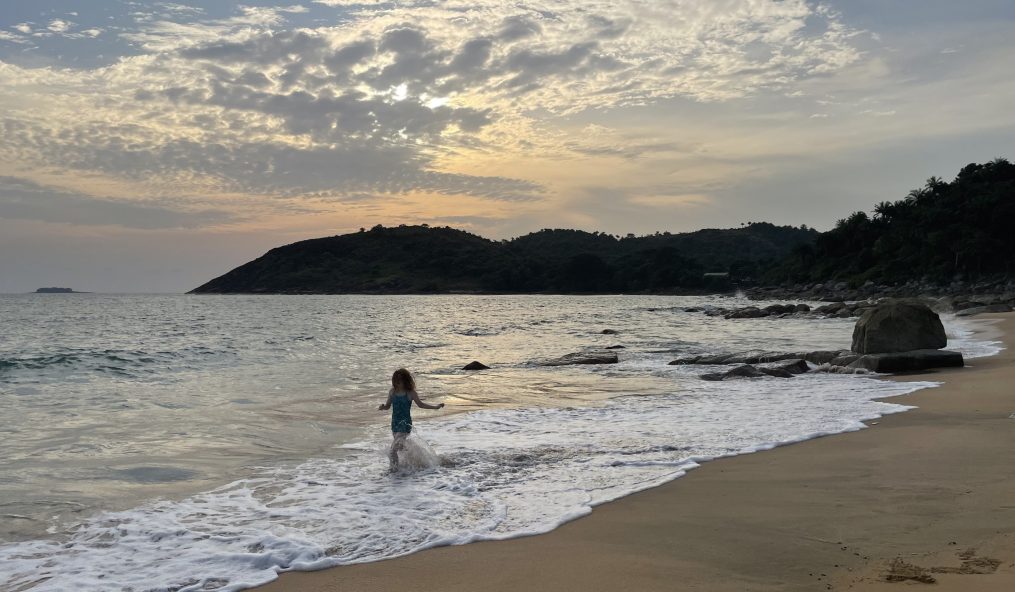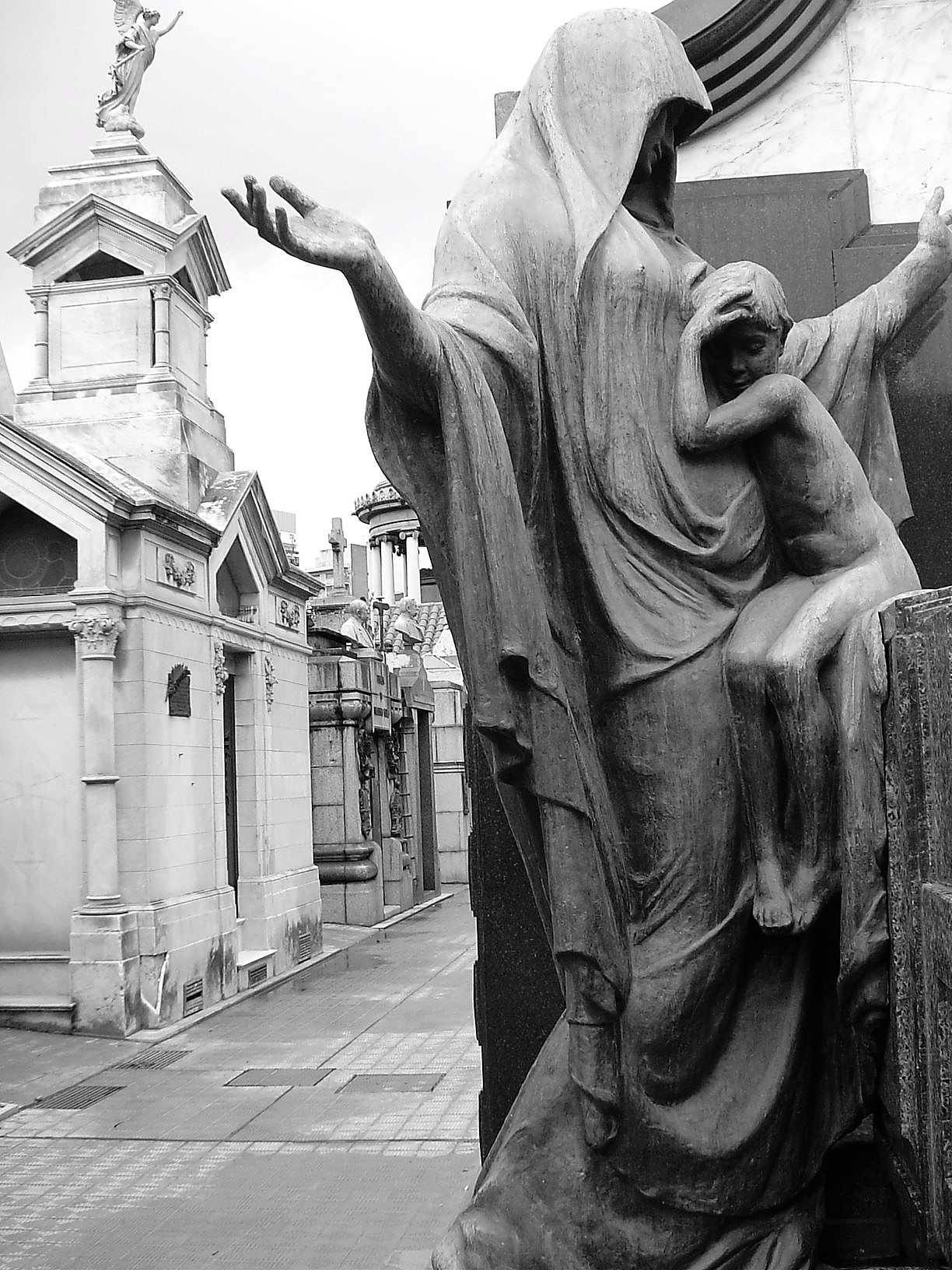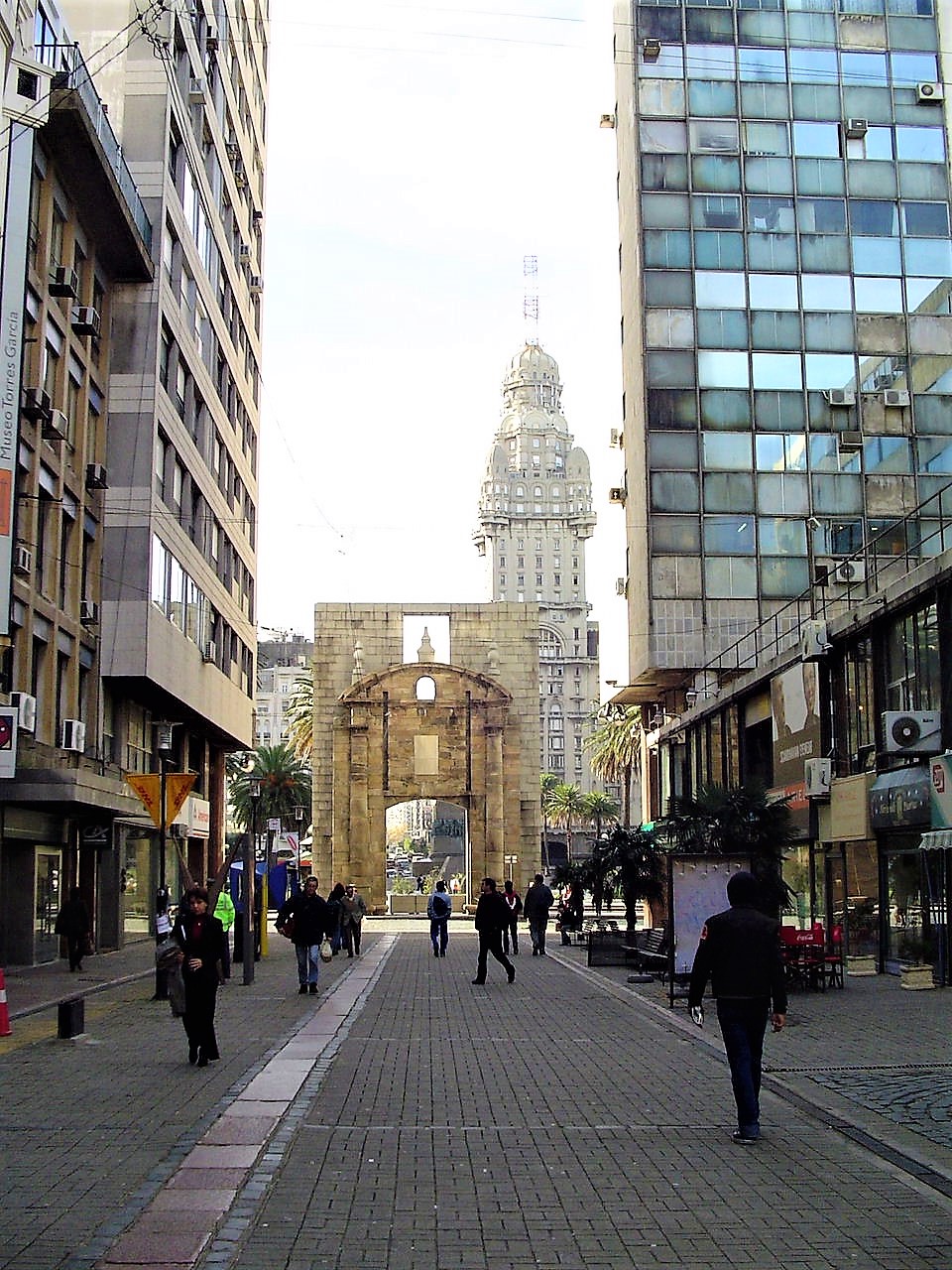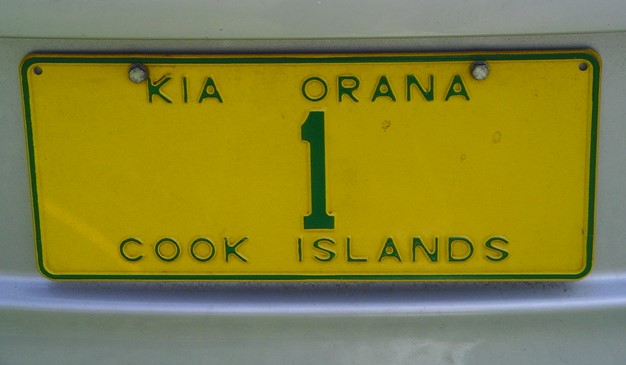This is the second of two posts recalling my September 2005 attempt to climb up Mount Kinabalu, Southeast Asia’s highest mountain. This was written soon after my trip in an email to friends and family.

Laban Rata Guesthouse was, at first, an oasis. Smiling, bubbling trekkers (happy I think not only to have made it to this point on the trek but to have also gotten out of the rain) bustled about or sat at tables munching down on warm bowls of noodles and sipping cups of steaming beverages. I had a bowl of chicken ramen and AG had Tom Yam soup. He had tea and I had hot Milo. And we just sat there slurping away, our hands caressing the hot bowls and mugs, content to have arrived. I did not want to take off my wet clothes because I knew that soon enough we would have to slosh our way back down the hill a little ways to the Waras Huts, now synonymous in our minds to the worst possible accommodation imaginable. This was especially true when we learned the Waras Huts were not heated!!! I could not help but stammer dumbfounded at the receptionist: “You have got to be kidding. Why would you have an unheated dormitory on the top of a mountain at 3300 meters (10,826 feet)??” I mean, really? Why have 100 beds in heated dormitories and then have just 16 or 24 beds in an unheated hut?? Why be that cruel?
AG tried to convince them they wanted to upgrade us, but they were very, very firm that they were full in the main lodge. So, I changed into my dry clothes, and we hung out in the main lodge as long as we could (the downstairs was not heated either) and then rolled up our pants legs, put on some flip flops, put our wet trainers in a bag, put our emergency ponchos back on, and braved the storm outside. I managed to get my flip flop stuck in a big muddy puddle, but I was back in good spirits and laughed about it. I also laughed when AG’s rain slicker he had tied around his waist fell down and it looked like he had lost his pants and he was hopping around trying to fix it while the rain pelted him. I think the thin air was getting to me, too.
But then we were faced with the reality of the Waras Huts. It was cold and sparse. A single thin blanket on each of the eight dorm beds in our room. Four slatted windows rattled in the wind allowing cold air to blow in. The bathrooms were outside; one had to brave the elements and leap over a big cold muddy puddle in order to pee. Oh, it was a joy to behold. We must have stood incredulous for a few minutes. They had to be kidding, right? We chose a lower bunk and decided it would be ours, figuring the only way we would survive the night is if we huddled together. We took our two blankets, put on all our dry clothes and huddled. But the drafts from the windows were terrible. We switched to another bed that was not under the windows, and when it became clear that we were sharing the room with only one other person we grabbed 2 more blankets from the other beds. Then AG fashioned two other blankets into large drapes over the drafty windows. Our poor dormitory-mate was left with his one blanket, though he didn’t seem to mind (seeing as how we had covered the windows) and he had on some pretty warm looking gear and made himself into a blanket cocoon. We missed dinner, but I didn’t really care because I could not face going outside again. AG did brave the elements one more time around 8 PM to get water and ask one more time if there was ANY way at all for us to move up to the main lodge. None.

We woke at 2:30 AM, although truth be told, even with four blankets we were never really warm enough to sleep well. The rain had stopped in the early evening the night before, but the wind was still high and the fog thick. The fog was, in fact, terrible – visibility was no more than 10 feet. Our guide had told us the night before if the weather remained bad, we could not climb. Although the rain had stopped, the low clouds threatened rain at any moment. The summit climb involved holding on to ropes while walking over granite. The ropes and rocks would be slick from the constant rain of the day before. Usually, the clouds roll in about 30 minutes to an hour after sunrise. With the cloud cover already well in place, there would be no views at all of the mountain or the surrounding area. And a climb that is already a tough one would become very risky. Folks have been known to fall off the mountain (I only confirmed this afterwards). I was not having warm fuzzy feelings about it.
We decided to ask around to other climbers to see what they were thinking. It seemed most were not going to try the climb – though of those polled in the lodge it was probably 50-50. Except that most had not even bothered to get out of their warm beds. Our dormitory-mate had not moved from his cocoon, so it looked like he was not climbing. In fact, none of the other people in the Waras Huts were climbing. One guy said that his guide had told him he had climbed the mountain 502 times, and this is the worst he had ever seen it. Sounded great! I asked one group why they would climb if they would see nothing but mist and one guy said “George Mallory: Because it’s there.” “Yeah”, I said, “but he died.” “Good point,” the climber said, but they were still going to give it a go.
AG and I decided to question our guide. AG asked Janeul very slowly what did he think of the conditions? Janeul looked thoughtful. “Is it dangerous?” AG asked. “Yes, dangerous,” said Janeul. “So should we climb?” AG asked. “Yes, can climb,” said Janeul sagely. What? Janeul just said it was very dangerous, very slippery, but if we would climb, he would climb. Passed the buck right on to us. I wanted Janeul to say there was no one in his/her right mind that would climb the mountain in these conditions so that I could in good conscious say, well I tried, but the guide said we would kill ourselves, so what can you do? This lackadaisical-leave-it-in-the-climbers-hands made us look like chickens. I did not like that one bit. I WANTED to climb. I had not flown halfway around the world for a week to almost climb a mountain. But I also was not interested in getting myself killed to see nothing but fog. Frankly, I was not even interested in being very, very cold and wet and scared to see nothing but fog.

Thus, we decided not to climb. We sat in the cold lounge and played a few games of cards. Some groups who had started off for the summit returned noting the conditions were poor and they had had to turn back. AG went to see if someone in one of the heated rooms would take pity on us and let us sleep in the beds of those who had decided to make the stupid climb. Success – and for two hours we huddled in a very warmly heated room while cursing the Waras Huts. (I can still remember – perhaps the most vivid of my memories of this trip – the sheer pleasure of snuggling beneath the cheap, scratchy, but substantial blanket in a top bunk in a toasty room. I feel into a deeply satisfying sleep). At 6:30 am we were up again and went down for breakfast, but we were too early. With nothing really to do, we decided to trek down as soon as it was light. Just before leaving the lodge Janeul told us we should get our climbing certificates, BUT since we had not climbed to the summit we could only get SECOND CLASS certificates. Well, no thank you! I think even if someone does not climb to the very top because of dangerous fog, but they climb up two-thirds of the darn mountain in cold, driving rain and stay the night in the Waras Huts then they deserve a FIRST CLASS certificate. But obviously Janeul thought differently. I just know he thought we were chicken. I was pretty sure on the way down when we would pass Malay porters heading up they would ask “Hey, Janeul how goes it? Did your people climb?” and Janeul would answer in Malay “No, these two are big chickens.”
The trek down was rather pleasant. I was disappointed, yes, but also relieved. The fog was still thick, but the air was crisp and fresh. As we were one of the first groups to start down, the trail was quiet, with only the occasional porter bringing up a sack of rice or a propane tank. There were only the sounds of water trickling, birds singing, frogs croaking, and the swish of the wind through the tropical leaves. It was beautiful. We practically flew down. AG almost ran at parts. I, however, was not so sure of my feet. About halfway down, it started to rain again and we donned those emergency ponchos once more, but by then we were under the forest canopy by then and it did not really bother us. We were thrilled though when we reached the waterfall and knew we had only five more minutes of trail. We celebrated under the Timphonon Gate with a Coca-cola each.
From here it was a whirlwind of vans and taxis and planes. The story should have ended there, except that it turns out mountain climbing immediately followed by over 24 hours of transportation may not be a good recipe. Back to Kinabalu by minibus, a few hours wait at a guesthouse, then a flight to Johor Bahru, Malaysia, then a taxi into Singapore and the airport, then a flight back to Washington, D.C. All with very little sleep – and certainly not sleep that would allow me to be horizontal. When we came down the mountain, AG and I kept remarking about how good we felt, that our legs felt absolutely fine. No cramping. No pain. We chalked it up to being pretty darn fit. How wrong we were!
By the time I was boarding my flight in Singapore back to the U.S. my calves were starting to ache. I could hardly lift my legs while on the plane and ended up sitting for far too long. By the time I arrived back in DC, my feet, ankles, and lower legs had swollen so that my toes looked like little Vienna sausages and my ankles were no longer identifiable as separate from my log-like legs. I figured this was nothing a good night’s rest could not cure, only to wake up the next day still swollen. I hobbled off to work, avoiding stairs as much as I could. Yet after lunch, when my legs seemed to have swelled even more, I started to think maybe, just maybe, something was not quite right. I went to see the doctor on base (I worked at the National Defense University on Fort McNair in Washington, DC) and he took one look at my swollen feet and said it looked bad. He squeezed my calves and I yelped in pain. He told me I should go to the hospital to have deep vein thrombosis ruled out. He called an ambulance, and I was strapped to a chair and carried downstairs, then a gurney, and rushed off to the hospital. I waited in the emergency room for about eight hours to be seen (!), but thankfully the ultrasound revealed I did not have any blood clots, just badly swollen legs. So, I got an extra vacation day staying at home and off my feet. Thanks to Mount Kinabalu (and some spectacularly terrible planning).
Seventeen years later I still wish I could have stood at the summit of Mount Kinabalu, though I know given the circumstances I made the right decision at the time. I neither regret the decision nor the attempt. It is highly unlikely though I will try again; I have to accept that some things just are not meant to be finished, and that is okay.
*Just a note that in researching online to refresh my memories for this post, I found out two interesting tidbits: As a result of the 2015 earthquake, Waras Huts is currently unavailable. No great loss in my opinion! Also, due to 2009 cable damage there is no longer any heating in the Laban Rata dormitories and bathrooms. Yikes! Granted, online sites offering climbing tours these days seem far more organized than when I was there 17 years ago. There are even three day / two night packages on offer that include a night at the base of the mountain to help with acclimatization. As we could not climb the day we arrived at the park, this was ultimately what we did. Staying that unexpected night at the base — at 1,520 meters (4,980 feet) — might have actually helped us! Sometimes being unprepared works in one’s favor!
















 Why would I want to go to Uruguay? This was the question posed to me by just about everyone to whom I mentioned my trip. Why not go to Argentina? they asked. Well as just about everyone knows I like to take holidays that are a little different. I do not necessarily want to go to someplace that everyone else is going. However, looking up some statistics, I came across a website that said that Uruguay receives more international tourists than Argentina, Brazil, and Chile. This actually left me rather puzzled. Really? Where were they hiding? But I think I may know how this happens, if you count every Argentine that goes over for a weekend of shopping, then Uruguay may indeed have more “tourists.” I’d be willing to bet that 80-90% of tourists to Uruguay are Argentine or Brazilian, another 10% are the international jet set and celebrities a la Naomi Campbell, Leonardo di Caprio, and Claudia Schiffer that descend on glitzy Punta del Este in the summer.
Why would I want to go to Uruguay? This was the question posed to me by just about everyone to whom I mentioned my trip. Why not go to Argentina? they asked. Well as just about everyone knows I like to take holidays that are a little different. I do not necessarily want to go to someplace that everyone else is going. However, looking up some statistics, I came across a website that said that Uruguay receives more international tourists than Argentina, Brazil, and Chile. This actually left me rather puzzled. Really? Where were they hiding? But I think I may know how this happens, if you count every Argentine that goes over for a weekend of shopping, then Uruguay may indeed have more “tourists.” I’d be willing to bet that 80-90% of tourists to Uruguay are Argentine or Brazilian, another 10% are the international jet set and celebrities a la Naomi Campbell, Leonardo di Caprio, and Claudia Schiffer that descend on glitzy Punta del Este in the summer.




















 On Sunday morning I attended church at the Cook Islands Christian Church (CICC). The service was mostly in Maori, the traditional language of the Cooks. The local patrons were dressed in their finest – with women in colorful flower-patterned dresses and traditional straw hats; the men in flowered shirts. The pews and beams and pulpit are made of a warm reddish medium wood, while the walls are a white stucco and the ceiling painted an aquamarine green – the kind popular in the sixties. Though it seemed an odd color in and of itself, it worked in this church with its simple stained-glass windows. Those sitting in the center section were clearly the most serious of church goers. They stood up first for songs, sang the loudest, and sat down last. They were also the best dressed. Those on the lower section’s outer seats seemed the second tier of church goers. Maybe they had not arrived quite in time to claim the middle seats for the day, but they were still dressed in their colorful finest and sang the hymns with vigor.
On Sunday morning I attended church at the Cook Islands Christian Church (CICC). The service was mostly in Maori, the traditional language of the Cooks. The local patrons were dressed in their finest – with women in colorful flower-patterned dresses and traditional straw hats; the men in flowered shirts. The pews and beams and pulpit are made of a warm reddish medium wood, while the walls are a white stucco and the ceiling painted an aquamarine green – the kind popular in the sixties. Though it seemed an odd color in and of itself, it worked in this church with its simple stained-glass windows. Those sitting in the center section were clearly the most serious of church goers. They stood up first for songs, sang the loudest, and sat down last. They were also the best dressed. Those on the lower section’s outer seats seemed the second tier of church goers. Maybe they had not arrived quite in time to claim the middle seats for the day, but they were still dressed in their colorful finest and sang the hymns with vigor.





 Nowadays the Historical Park is peaceful. The wall of the compound is all that still exists from traditional times beside white sand, a glittering sea, and reconstructed straw huts. In one large boat house, an old native Hawaiian carves the traditional totem or Ki’i that guard the entrance to the landing lagoon reserved only for ali’i, and the site of some reconstruction, from evil spirits. In the small lagoon a sea turtle swam around, another basked in the sun.
Nowadays the Historical Park is peaceful. The wall of the compound is all that still exists from traditional times beside white sand, a glittering sea, and reconstructed straw huts. In one large boat house, an old native Hawaiian carves the traditional totem or Ki’i that guard the entrance to the landing lagoon reserved only for ali’i, and the site of some reconstruction, from evil spirits. In the small lagoon a sea turtle swam around, another basked in the sun.